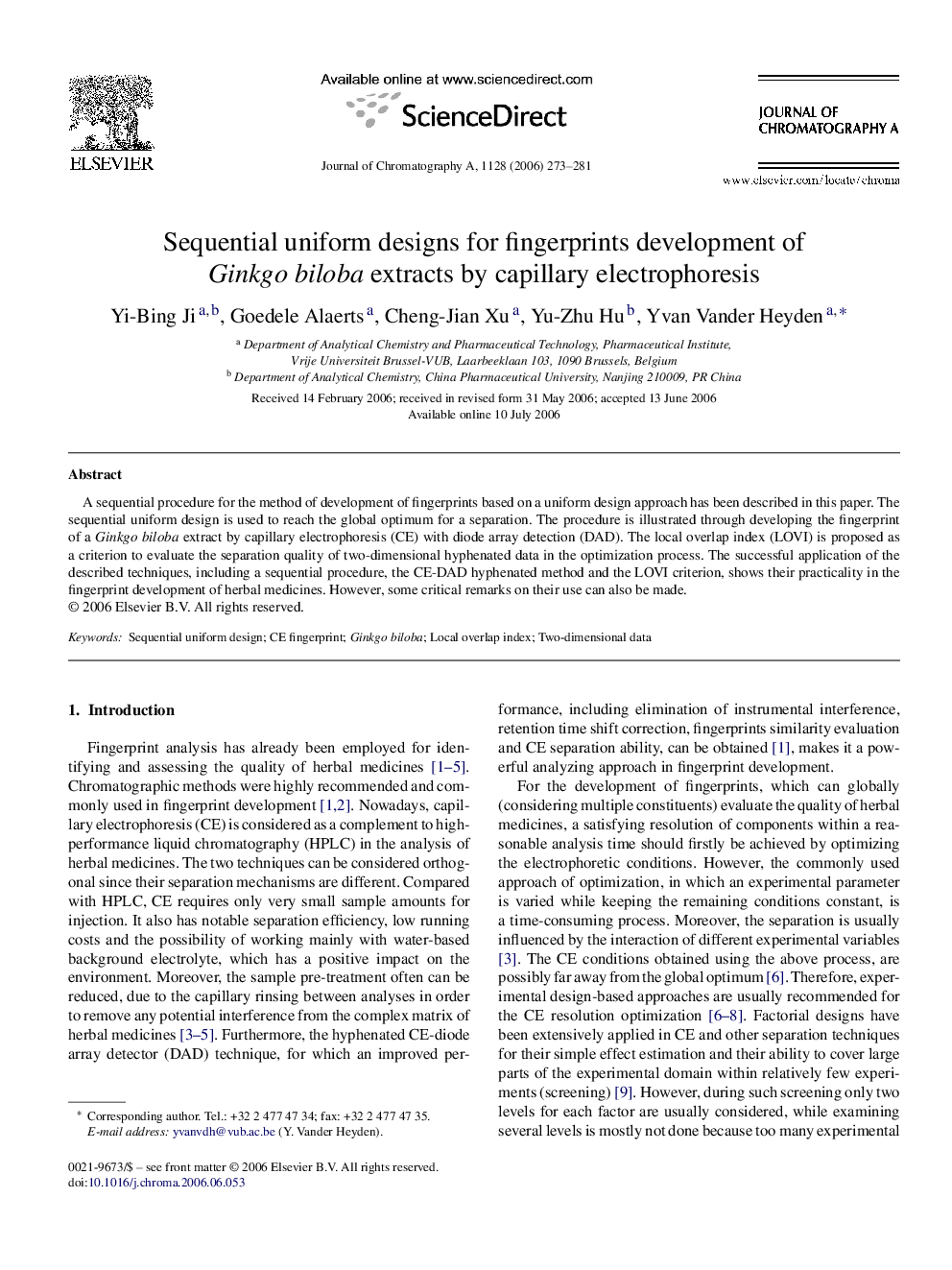| کد مقاله | کد نشریه | سال انتشار | مقاله انگلیسی | نسخه تمام متن |
|---|---|---|---|---|
| 1211461 | 1493762 | 2006 | 9 صفحه PDF | دانلود رایگان |

A sequential procedure for the method of development of fingerprints based on a uniform design approach has been described in this paper. The sequential uniform design is used to reach the global optimum for a separation. The procedure is illustrated through developing the fingerprint of a Ginkgo biloba extract by capillary electrophoresis (CE) with diode array detection (DAD). The local overlap index (LOVI) is proposed as a criterion to evaluate the separation quality of two-dimensional hyphenated data in the optimization process. The successful application of the described techniques, including a sequential procedure, the CE-DAD hyphenated method and the LOVI criterion, shows their practicality in the fingerprint development of herbal medicines. However, some critical remarks on their use can also be made.
Journal: Journal of Chromatography A - Volume 1128, Issues 1–2, 22 September 2006, Pages 273–281